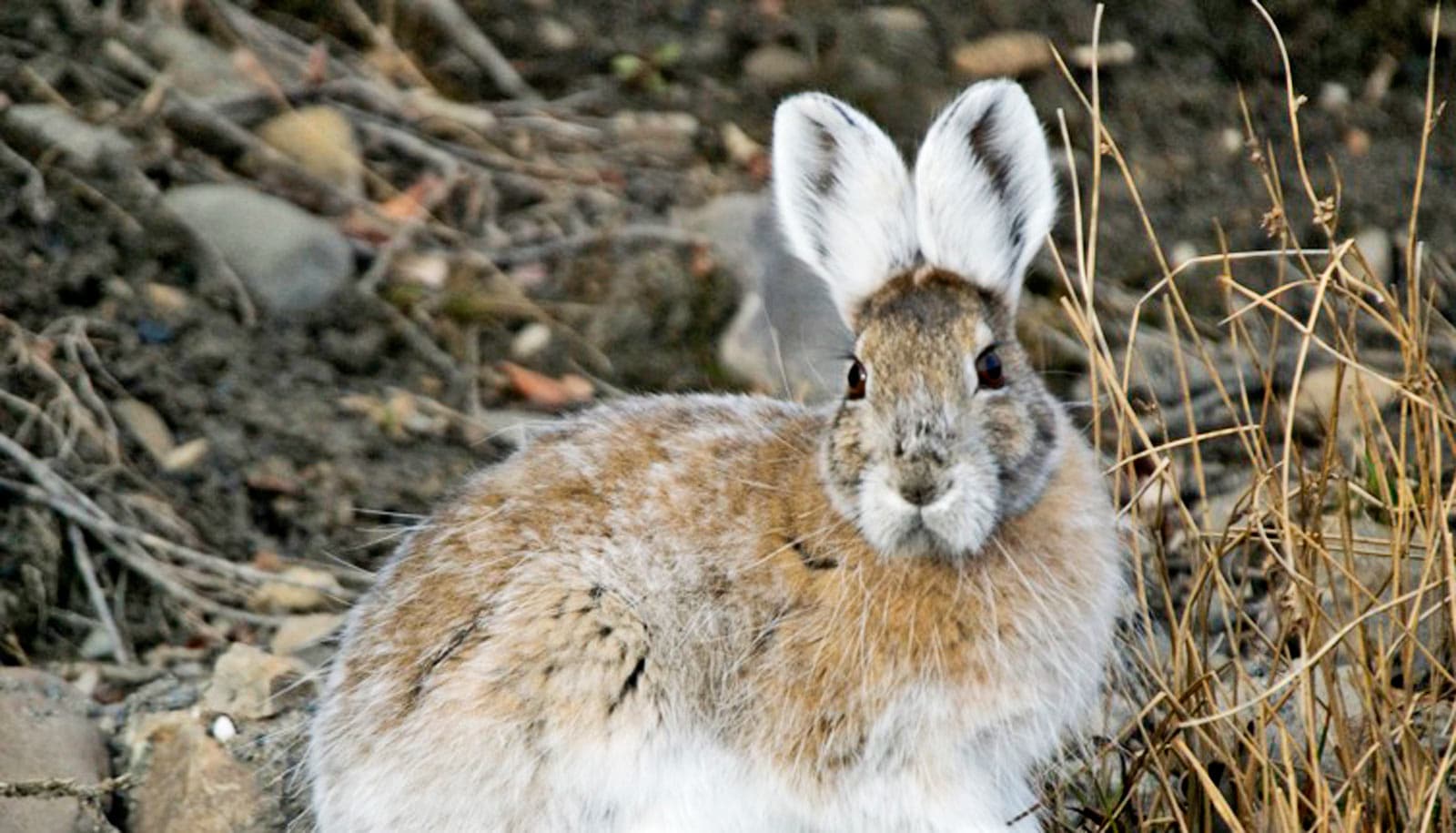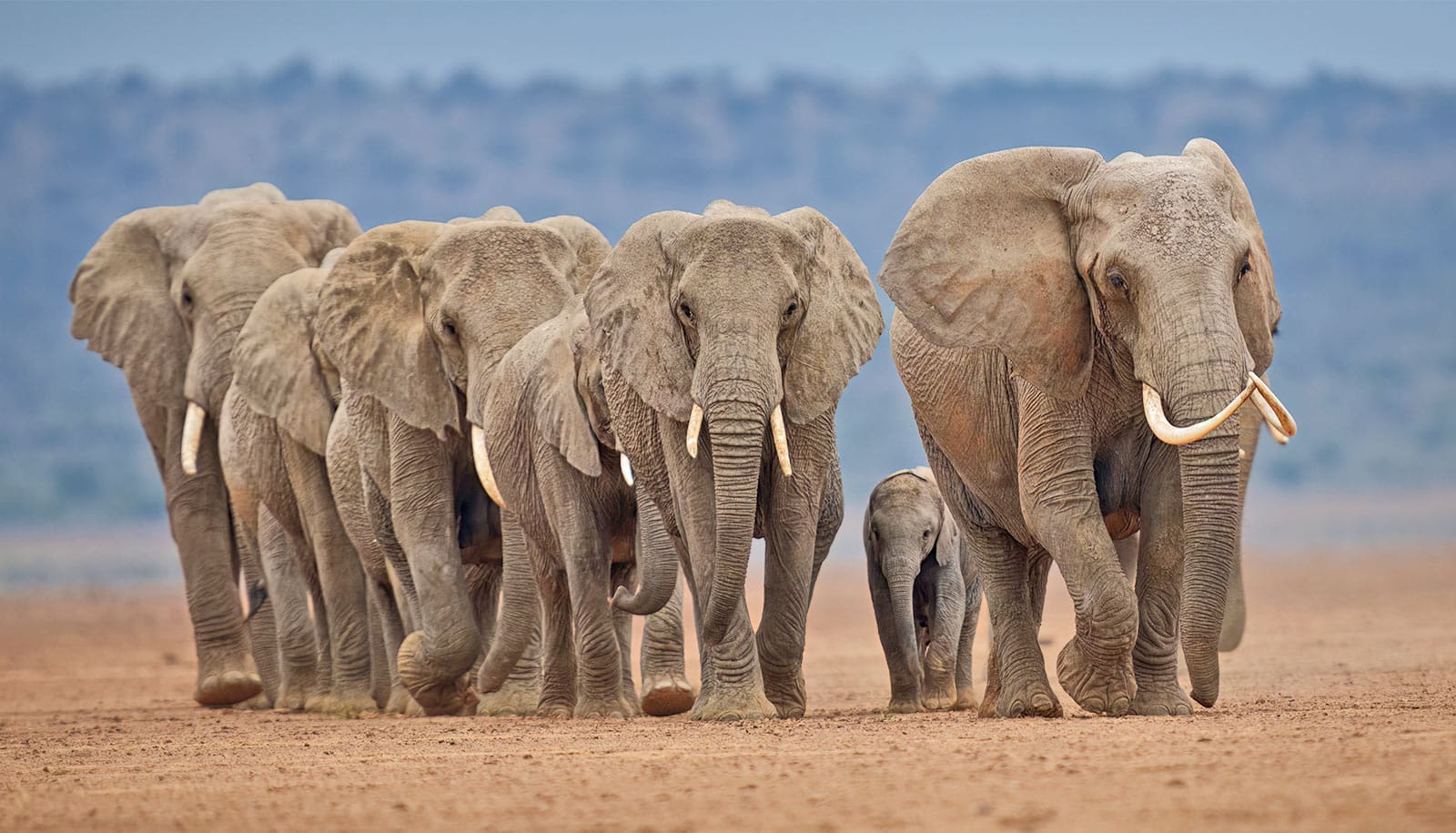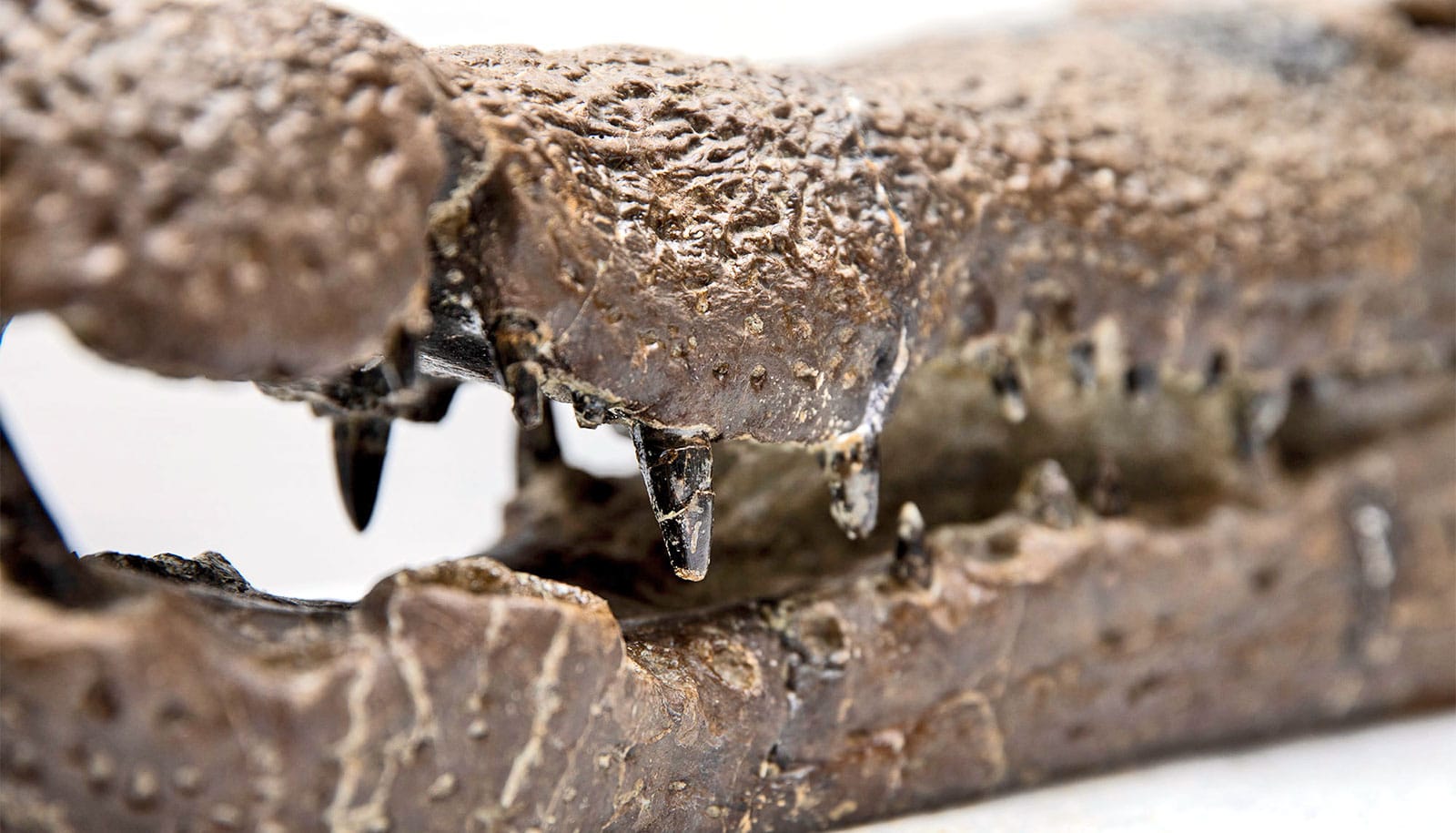Snowshoe hares in Pennsylvania—at the southern end of the species’ range—show adaptations in fur color and characteristics, behavior, and metabolism that allow them to survive in less wintry conditions than their far northern relatives can handle.
These evolved, organic survival strategies suggest snowshoe hares possess at least a limited ability to adjust to a warming climate, researchers say.
Understanding how non-hibernating mammals cope with extreme cold and snow—and then, the lack of those conditions—is important because climate-induced changes in winter temperatures and snow cover are predicted to become more pronounced.
Animals living in the Arctic and Boreal regions—especially those adapted to survive harsh winters—are particularly vulnerable because these regions are experiencing the greatest changes in winter conditions, says Duane Diefenbach, adjunct professor of wildlife ecology and leader of the Pennsylvania Cooperative Fish and Wildlife Research Unit at Penn State.
“Understanding how a species has adapted to the different winter temperatures experienced across their range can offer insight into how a species might respond to future changes in winter conditions.”
For a new study in the Canadian Journal of Zoology, researchers compared winter coat characteristics and heat production of snowshoe hares in Pennsylvania’s Pocono Mountains to hares in Canada’s Yukon, in the southwestern Kluane region, to investigate how they might respond to changing environmental conditions.
Earth will likely pass heat ‘tipping point’ by 2100
The study also investigated how hares in Pennsylvania altered movement rates and resting-spot selection to cope with variable winter temperatures.
To accomplish the analysis, data from a study of Yukon snowshoe hares collected in 2007 by research team member Michael Sheriff, assistant professor of mammalogy and ecology, was compared to information collected from 70 Pennsylvania hares trapped in 2014-15 by Laura Gigliotti, lead author of the current study. Some were fitted with radio collars that monitored location, movement, and animal temperatures.
Hares in Pennsylvania had shorter, less-dense, and less-white winter coats than their northern counterparts, suggesting lower coat insulation. They also had lower coat temperatures, indicating that they produced less heat than those in the northern population.
Further, the Pennsylvania hares chose resting spots that protected them from predators rather than ones that offered warmth. Hare-movement rates were related to air temperature, with the smallest movements occurring at the lower and upper range of observed ambient temperatures—the animals didn’t move much in winter when it was very cold or very warm.
Snowshoe hares are ideal for studying a species’ potential to alter winter adaptations in response to climate change because unlike other small mammals that hibernate, group huddle, or use nests as means of coping with cold temperatures, hares remain active on the surface throughout winter. And they’re active at night when temperatures are typically the lowest.
Global warming is already changing genes
“Snowshoe hares also have well-documented morphological and physiological adaptations to cope with winter, such as an increase in fur density—in addition to their coat color change—and a low metabolic rate,” Gigliotti says. “Hares also have a broad geographic range, which permits comparison of winter adaptations from populations that experience very different conditions.”
Pennsylvania hares were, on average, significantly larger than hares in the Yukon—and to the researchers surprise, did not completely molt, or change coloration from brown to white, in the winter. That development, of course, helps hares camouflage and elude predators in winters with scant snowfall.
“We trapped three hares in January that were almost completely brown, and it’s the first time that has been recorded in eastern North America,” she says. “There are hare populations in the Cascades in Washington that don’t molt completely, but that had not been documented elsewhere.”
Researchers aren’t sure over what time scale Pennsylvania snowshoe hares’ adaptations to warmer winters occurred or whether genetic modifications are triggering the changes. But, in tandem, the adaptations may allow hares to survive warming long term.
“Our results indicate that snowshoe hares may be able to adapt to future climate conditions via changes in pelage characteristics, metabolism, and behavior,” Gigliotti says. “Unfortunately, we don’t know if they can adapt as quickly as climate change is occurring.”
The Pennsylvania Game Commission supported this research.
Source: Penn State



